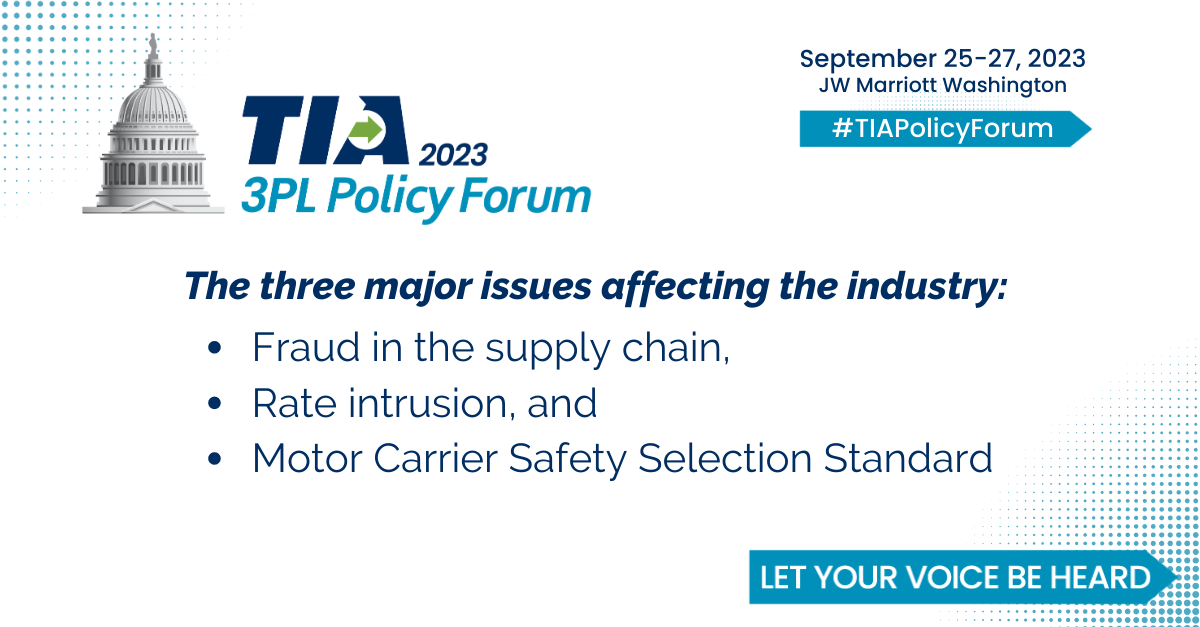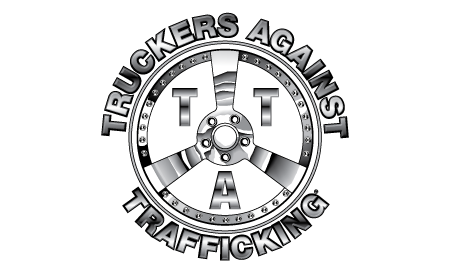On The Hill
Reasons To Be At This Year's Annual Policy Forum:
TIA's annual Policy Forum is right around the corner. We are excited about the 2023 Policy Forum and would like to outline some reasons why you should attend the Policy Forum in Washington, DC September on 25-27, 2023.
- Advocacy Opportunity: The event allows participants to actively advocate for the interests of the transportation industry. By engaging with policymakers and legislators in Congress, attendees can express their viewpoints on critical issues like, fraud, rate intrusion, and the Motor Carrier Safety Selection Standard Act and shape policy discussions that affect the 3PL industry's future.
- Networking: The Policy Forum brings together professionals from diverse sectors within transportation and logistics. By attending, individuals can establish valuable connections, engage with industry leaders, policymakers, and government officials, and explore potential collaborations.
- Education and Awareness: The TIA Policy Forum features high-level agency briefings on relevant topics impacting the transportation industry. Attendees can gain insights, knowledge, and updates on regulatory and legislative issues, as well as stay informed about the latest trends and advancements in the industry.
- Influence and Impact: Active participation in the event empowers attendees to directly influence the policy-making process. By sharing their experiences, perspectives, and input, they contribute to shaping legislation and regulations that address the concerns and needs of TIA members and other stakeholders.
TIA's Government Affairs staff will handle all the scheduling and logistical operations of the Policy Forum, while your only job is to show up and make a difference. With everything going on in the marketplace and in Congress, it has never been more crucial to have you in Washington, DC this September!
Registration Is Open For Policy Forum
House Passes Debt Limit Bill:
Speaker Kevin McCarthy has successfully overcome opposition from over 70 Members in his own party to pass a debt limit increase bill in a bipartisan compromise with President Joe Biden. As lawmakers convened in Washington to prevent a potential default, Speaker McCarthy and his allies worked to secure the 218 votes needed for the bill's passage. Despite concerns raised by conservatives the package was approved on the House floor last Wednesday. The bill passed resoundingly despite a large portion of Republicans opposing it claiming it did not go far enough in addressing America's debt crisis. The vote was bipartisan with more Democrats supporting the measure than Republicans.
The bill's fate now - at least at the time of this newsletter - depends on votes in the Senate, needing 60 yays to bypass any sort of filibuster. Senators Rand Paul (R-KY), Mike Lee (R-UT) and Lindsey Graham (R-SC) are all expected to propose amendments, which will slow the process. Although there is expected to be some drama, the bill is expected to pass and the debt limit will be raised before the pending deadline.
NHTSA Proposes Braking Regulation:
The National Highway Traffic Safety Administration (NHTSA) announced on Wednesday its intention to propose a new regulation mandating that all new passenger cars and light trucks come armed with automatic emergency braking (AEB) systems capable of detecting and avoiding crashes with people, even at night and at higher speeds than most current systems can tolerate.
In 2016, automakers made a voluntary commitment to make AEB a standard feature on 95 percent of light-duty vehicles by September 1, 2022, a goal they have nearly achieved. NHTSA reported that approximately 90 percent of new light vehicles now have AEB systems, with 65 percent of them meeting the test procedures for the New Car Assessment Program.
However, NHTSA Chief Counsel Ann Carlson stated that the proposed rule surpasses the voluntary commitment and sets a significant safety milestone. The rule would require AEB systems to be more effective at higher speeds, as the technology has matured enough to warrant such a regulation.
The proposed rule contains full collision avoidance, which means vehicles would need to come to a complete stop without making contact with the vehicle in front. Carlson explained that the test to meet this requirement is challenging, aiming to eliminate as many collisions as possible.
NHTSA data indicate that the majority of crashes, injuries, and fatalities occur at speeds above 25 mph, with the risk of severe injury and death increasing significantly at higher speeds. Under the mandate, if a driver fails to react to a hazard on the road, the AEB system would intervene to avoid a collision with another vehicle at speeds up to 50 mph. If the driver applies the brakes but not sufficiently to prevent a collision, the system would need to react quickly enough to avoid the other vehicle at speeds up to 62 mph.
The technology will also need to detect and avoid pedestrians, even in low-light conditions, at speeds up to 37 mph. Around 70 percent of pedestrian fatalities occur at night.
NHTSA estimates that the mandate could save at least 360 lives and prevent over 24,000 injuries annually.
The proposed rule is part of the Department of Transportation's National Roadway Safety Strategy and was required by the 2021 infrastructure law.
The industry is currently reviewing the rule, and the Alliance for Automotive Innovation stated that many vehicles already equipped with AEB also include pedestrian AEB. NHTSA estimates that the rule would cost the industry $282 million per year.
The comment period for the proposed rule will be open for 60 days.
If you have any questions about this newsletter or TIA 2023
Policy Forum, please email [email protected]
TIA 1900 Duke Street STE 300 Alexandria, Virginia 22314 US
Want to change what emails you receive from us? Update your preferences.

















